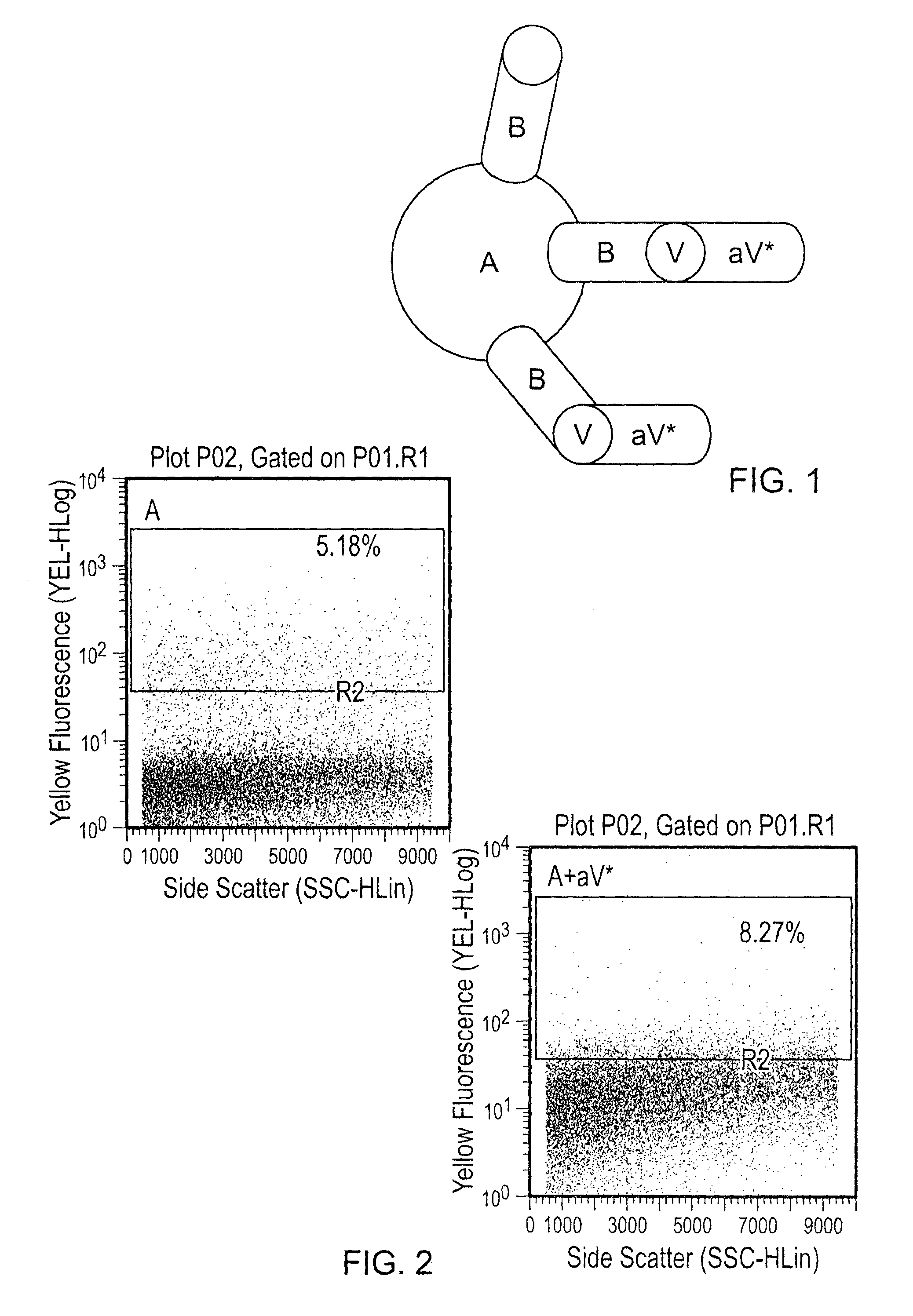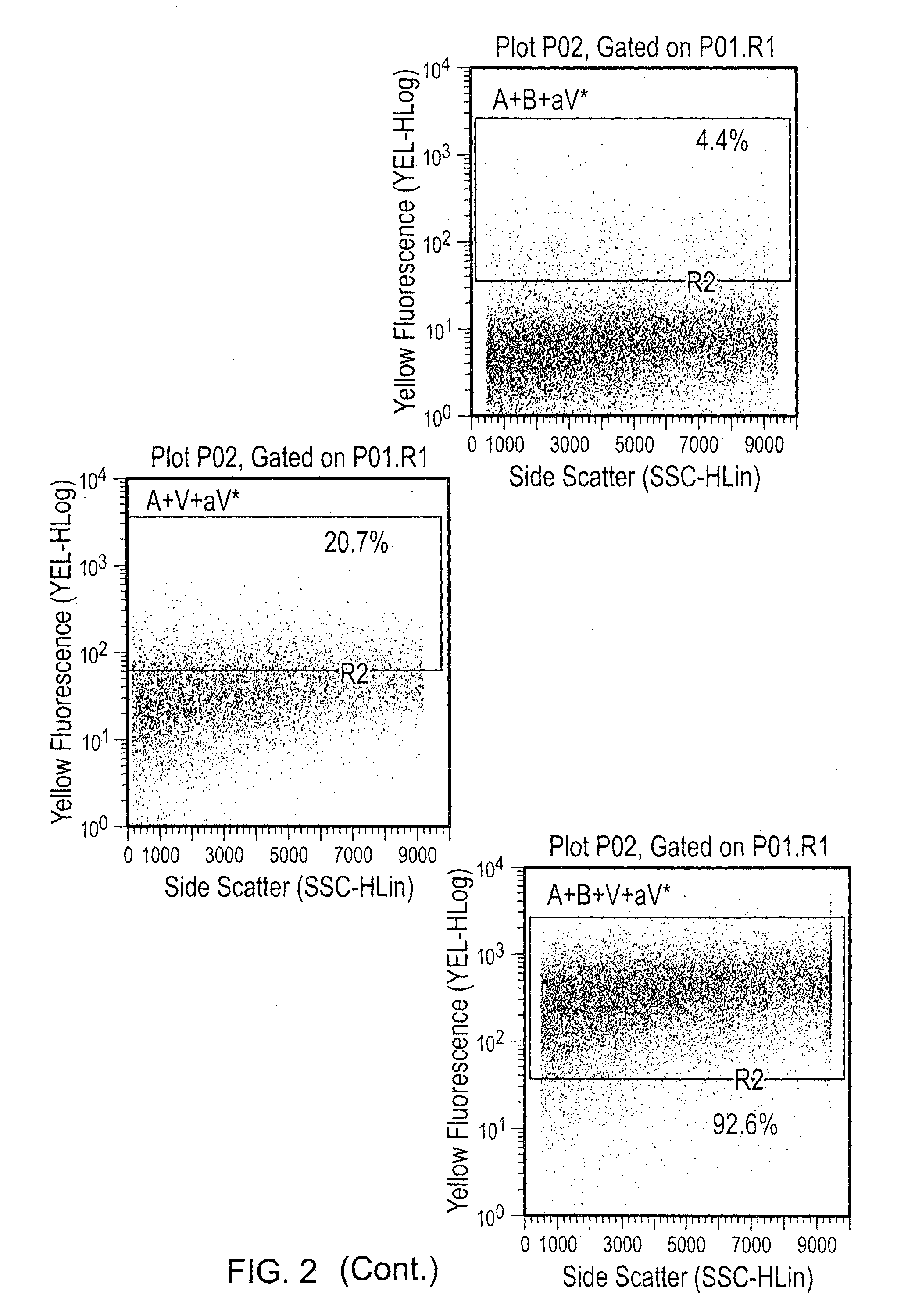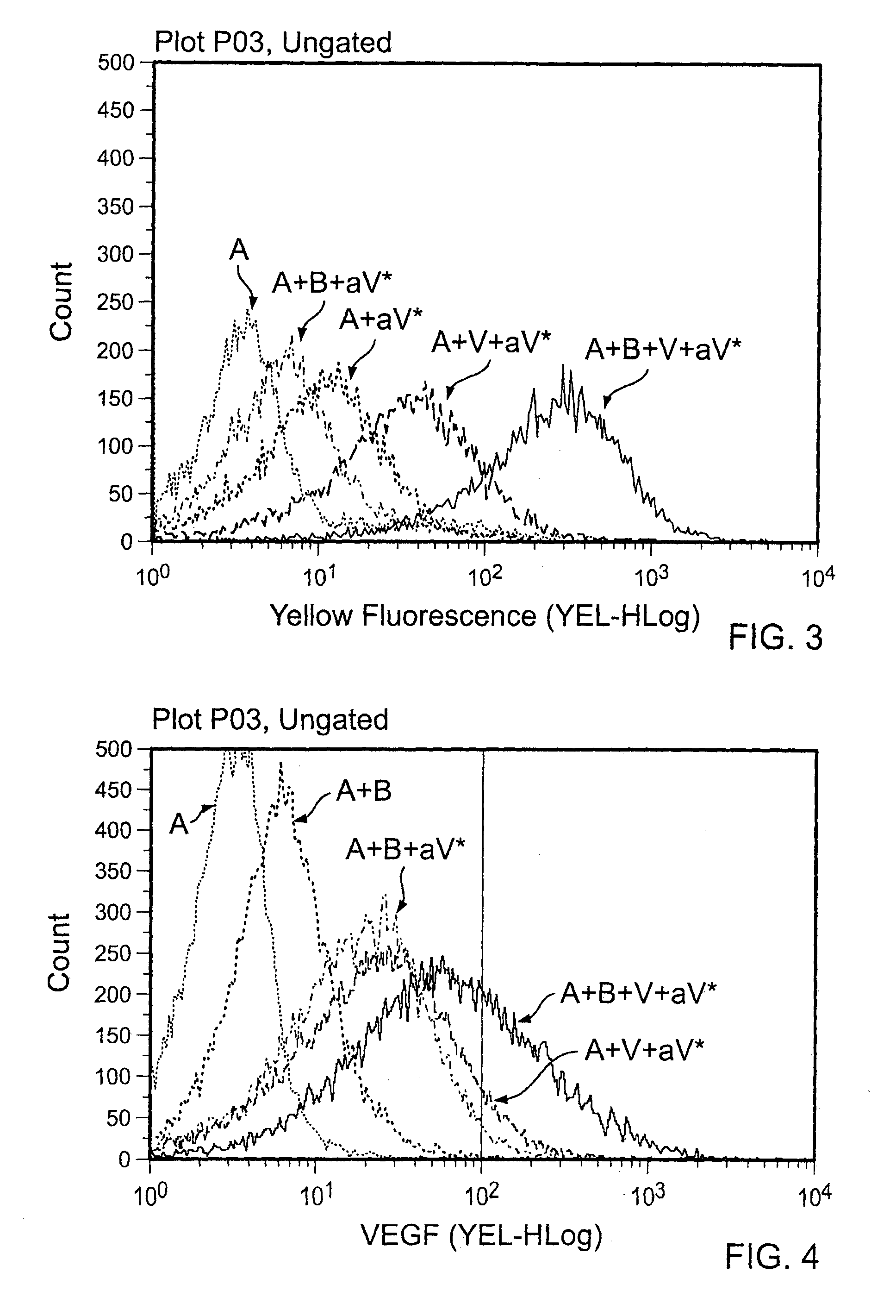Cancer treatments
a cancer and treatment technology, applied in the field of cancer treatment, can solve the problems of formation of nearby satellite papules or nodules, and achieve the effect of prolonging the life and increasing the progression-free survival rate of skin cancer patients
- Summary
- Abstract
- Description
- Claims
- Application Information
AI Technical Summary
Benefits of technology
Problems solved by technology
Method used
Image
Examples
example 1
Contacting Abraxane® with Avastin® Results in the Formation of Abraxane® / Avastin® complexes
[0054]Abraxane® (1 mg / mL) and Avastin (25 mg / mL) were stored at 4° C. 10 μg (10 μL) of Abraxane® nanoparticles and 500 μg (20 μL) of Avastin were mixed in a total volume of 30 μL. The Abraxane® and Avastin were incubated at room temperature for 30 minutes.
[0055]After incubation, the Abraxane® nanoparticles were spun and washed three times with 1× PBS to eliminate unbound bevacizumab. The nanoparticles were spun at 5000 rpm for 5 minutes and resuspended in 50 μL of 1× PBS.
[0056]100 ng or 500 ng of VEGF was added to each tube for 30 minutes at room temperature, and the washes were repeated to eliminate unbound VEGF. PE anti-human VEGF was added at a 1:50 dilution, and the particles were once again incubated and washed. Visualization was done by flow cytometry, and percentage of PE (VEGF) positive particles was determined (FIGS. 1-4). Various combinations of agents were tested as indicated in the...
example 2
Human Plasma Inhibits the Formation of Abraxane® / Avastin® Complexes
[0068]10 μL (10 μg) of Abraxane® was added to eppendorf tubes, and 500 μg (25 μL) of avastin was added and resuspended in a final volume of 50 μL. Human plasma was titrated using 1:2 dilutions (1:2, 1:4, 1:8, or 1:16). 50 μL of plasma and 50 μL of each plasma titration were added to the tubes with Abraxane® and avastin. In some cases, human serum albumin (500 μg, 50 μg, 5 μg, 0.5 μg, or 0.05 μg / mL) or human polyclonal immunoglobulin (500 μg, 50 μg, 5 μg, 0.5 μg, and 0.05 μg / mL) was added to the tubes in place of human plasma.
[0069]After a 30 minute incubation at room temperature, the Abraxane® nanoparticles were washed in 1× PBS twice. 100 ng of VEGF was added to each tube for 30 minutes at room temperature, and the washes were repeated. PE anti-human VEGF was added at a 1:50 dilution, and particles were once again incubated and washed. Visualization was done by flow cytometry, and percentage of PE (VEGF) positive pa...
example 3
Abraxane® / Avastin® Complexes have a Higher Level of Cell Toxicity than Abraxane® Alone or Abraxane® / Herceptin Complexes
[0070]The VEGF producing melanoma tumor cell line, A375, was incubated overnight in the presence of Abraxane® nanoparticles only, Abraxane® / Herceptin (non-VEGF targeting) complexes, and Abraxane® / Avastin® (ABX:BEV; VEGF targeting) complexes. Increasing doses of drug were added to the cells to give 6.25, 12.5, 25, 50, 100, and 200 μg / mL of taxol. After the overnight incubation, cell proliferation was determined by measuring the level of DNA synthesis. A higher level of cell toxicity (less DNA synthesis) of cells incubated with the VEGF targeting complexes (ABX:BEV) relative the ABX alone and non-VEGF targeted complexes (ABX:HER) (FIG. 11).
PUM
| Property | Measurement | Unit |
|---|---|---|
| diameter | aaaaa | aaaaa |
| diameter | aaaaa | aaaaa |
| diameter | aaaaa | aaaaa |
Abstract
Description
Claims
Application Information
 Login to View More
Login to View More - R&D
- Intellectual Property
- Life Sciences
- Materials
- Tech Scout
- Unparalleled Data Quality
- Higher Quality Content
- 60% Fewer Hallucinations
Browse by: Latest US Patents, China's latest patents, Technical Efficacy Thesaurus, Application Domain, Technology Topic, Popular Technical Reports.
© 2025 PatSnap. All rights reserved.Legal|Privacy policy|Modern Slavery Act Transparency Statement|Sitemap|About US| Contact US: help@patsnap.com



